Your cart is currently empty!
Category: Power Automate
-

New Connectors In Power Automate: Azure VM, Azure App Service, CivicPlus, and RiskIQ
Automatically Start your Web Apps and Virtual Machines, Connect your Forms and Expand your Security Data
Connectors galore, WOW! Power Apps connector creators were on a tear this past weekend with the release of four new connectors. There are now more than 350 Power Automate connectors.

Azure App Service Subscribers to the Azure App Service may want to check out the new Azure App Service and Azure VM connectors.
The Azure App Service connector lets you manage the app services and server farms hosted there with its ability to start, stop, and restart web apps.

Azure VM We at Reenhanced thought of a couple possible uses, and we’re betting there are lots more you’ll think of for your business. We envision that you could use an external event to trigger the start of a web app, or save costs by running apps only when people are working using a time-based trigger that schedules web app availability.
The Azure VM connector allows you to manage virtual machines (VMs) to start, stop, restart, redeploy, or deallocate a VM image. With it, you could start or restart a VM automatically based on a schedule or specific external event, and again save costs by building a flow that will automatically deallocate a VM when resources are done. This ought to please your boss, board, and shareholders too.
What about forms connectors?

CivicPlus Transform Another connector among the new releases will serve as a handy tool for people who work in local government or similarly structured organizations. CivicPlus Transform automates the connection of forms data to the Power Platform. The connector simply retrieves the specific form submission and also has a trigger for when a form submission happens, making it easy to power intelligent business processes using CivicPlus forms.
Did someone call for security?
Rounding out the four new Power Automate connector selections is RiskIQ.

RiskIQ This connector, used to identify and verify site security, ties your security infrastructure to the Power Automate platform. You can use this as a part of a flow to analyze URLs, SSL Certificates, DNS and WHOIS records. We think this offers you interesting possibilities for expanding your data, like the ability to find a domain associated with a phone number, or to analyze URL information for use in other actions. You can, for example, turn a long URL like
http://reenhanced.com/rescues/brokentech.htmlinto the base hostname,reenhanced.comwhich can be useful in flows where you want to populate or match website data.Any way you use these connectors have the potential to make your work more efficient. Contact your team at Reenhanced for more information.
-

Deep Dive Into the Yeelight Power Automate Connector
At Reenhanced, we strive to be the first to know when new Power Automate connectors are added and when big changes are made. When I saw the Yeelight connector, I was immediately intrigued and decided to contact their team to learn more. A quick internet search on Yeelight showed me that they specialize in smart lighting, and I was curious how this could fit in with the business-focused Power Automate connectors we generally highlight.
Yeelight is the world-leading smart lighting brand, with in-depth exploration in smart interaction, industrial design and lighting experience.

Yeelight provides smart lighting solutions for homes and businesses. I virtually sat down with Victoria Wang, Business Development Manager for Yeelight, and to be honest, I had never even considered some of these use cases. I think some are brilliant!
Why did Yeelight decide to create a Power Automate connector?
“Yeelight is dedicated to bringing users the ultimate convenience. Over the years, Yeelight has integrated into major third-party platforms to offer users more control options. The Yeelight Power Automate connector offers simple but powerful functionality to increase office efficiency.”
How can Yeelight help existing Microsoft 365 customers?
“Light can be a useful signal in an office. Our connector uses customize light effects to indicate project status or certain events. For example, you can set the light red automatically when the conference room is in use. I personally like to set my Yeelight desk lamp to blink when receiving email from business partners.”
Do you have any examples of Flows that you or your customers have created since you have launched the connector?
“There are two major kinds of flow we use:
- To suggest status.
- To indicate events.
As mentioned above, green and red could be used to indicate conference room availability. Different brightness levels could indicate project process. Users can also use light to indicate events. For example, you can set a lamp to blink when a Twitter message is received. Or you can set a light to change when a new schedule item is about to start.”
What can Microsoft 365 customers look forward to in terms of future improvements to this connector?
“We want our connector to be simple and easy to use. We have no plans right now to change this connector.”
Will Yeelight be adding any additional Power Automate connectors in the future?
“Yeelight Pro, Yeelight’s commercial product line will be launched this year. Yeelight Pro offers lighting solutions for buildings and offices, and we hope to add a Yeelight Pro connector to help manage office lighting systems.”
Need Help?
Thank you so much to Victoria for letting us learn more about their connector and sharing so much with Reenhanced! We cannot wait to see the new Yeelight Pro connector in the future.
Reenhanced is a Power Platform Partner who can help you get up and running with this and other connectors today! If you need help, please reach out to us by emailing heidi@reenhanced.com or fill out our Contact Us form.
-

New in Power Automate: Tilkee and Blackbaud Raisers Edge NXT
On Friday, in addition to the other changes mentioned we saw the addition of two new Power Automate connectors: Tilkee and Blackbaud Raisers Edge NXT. This brings the total number of connectors to 347. Both of these new connectors bring more external functionality to Power Automate, Power Apps, and Logic Apps.
 Tilkee – A File Sharing Platform
Tilkee – A File Sharing Platform
Upload files into projects and track views and accesses. Tilkee is a web-based file sharing platform. Use it to share documents and files and track access to each item. It appears the developers of this app use English as a second language. Additionally, there was no response to our contact request for more information. Keep this in mind if you’re looking to use Tilkee as a file sharing platform.
What can you do with this connector?
This connector offers both triggers and actions, which means there are some interesting applications you can do:
- Trigger an automation when a project is signed – Use this trigger to kick off other business processes when your project gets a sign-off.
- Trigger an automation to followup after a user accesses your project – Example, you can use this to automatically send a sales follow-up email after a contact views the files you shared with them. Since it can happen so close to when the files are viewed, you’d be more likely to get a response.
- Automatically add files to a shared folder for a user – You can use the upload information action to keep a shared file repository up-to-date based on other actions that happen outside of Tilkee.
 Blackbaud Raisers Edge NXT
Blackbaud Raisers Edge NXT
Blackbaud’s Raisers Edge NXT is a wonderfully mature platform that provides donor management software for non-profits and charitable organizations. We found this connector to be extraordinarily well documented with a robust application platform to support further customization. With a whopping 97 actions available, this connector offers one of the widest scopes of any in the Power Platform.
Sadly, there are no triggers for this at this time. This means that any automations you build with this will either be time-based or pushed from other Power Platform triggers.
What can you do with Blackbaud Raisers Edge NXT?
Since this connector, despite its wide scope, offers only actions you will have to be creative with how to get a full-featured automation. Here are some of our ideas for what you can build.
- Use a web-form or other trigger to add a constituent to your database – When triggered from a web-form or email, you could user Power Automate to automatically expand your constituent list.
- Build a custom Power App – The huge number of actions for this connector makes it ideally suited for a Canvas App (Power App) that allows you to deploy custom mobile apps quickly across your organization without needing to hire a developer.
- Extend your gift giving process – Since the connector allows you to get gift information, you could build an automation to attach other actions to your gift giving. For example, a survey or any other action across the Power Platform.
Are you building with these connectors?We would love to know what you’re building and are standing by to help if you run into any problems. Our talented Power Platform specialists are happy to discuss what you’re building or help you come up with ideas on how you might be able to connect these to other connectors in the Power Platform. No one else knows the Power Platform like our team, so let’s build something amazing, together.
-

Updated in Power Automate: A big day for Teams and Azure
We’ve seen this before, but now we know enough to say for certain. Friday is a big day for Power Automate updates. Today we see the release of 2 new connectors and more importantly a fresh batch of new and updated actions for Microsoft Teams and Azure Container Instance. With this StaffHub and Power Automate are effectively done.
 Microsoft StaffHub connector is now fully deprecated
Microsoft StaffHub connector is now fully deprecatedAlthough previously announced, the work required to move the StaffHub capabilities into Microsoft Teams looks to be complete. If you are using this connector in your flows, you should expect the StaffHub connection to go away at some point potentially without any further warning.
☠ What are your options now that StaffHub is effectively dead?
The marking of the last of StaffHub’s actions as deprecated has been accompanied by the following new actions within Microsoft Teams:
- Microsoft Teams: Get a team – Somehow there was no way to get Team details into your Flow/Logic App before today. This gap is now closed and you can get team details if you have its ID.
- Microsoft Teams: Shifts: Approve/Deny * – Various actions have been added allowing you to approve or deny Swap Shifts, Time Off, Shift Offers, Open Shifts.
- Microsoft Teams: Shifts: Get open shift – Previously you could get a shift by ID, but the new action added today allows you to refine your query so that if your shift is not open, your query will return no results.
- Microsoft Teams: Shifts: Get scheduling group – Now you can get a scheduling group, which you couldn’t do before today
- Microsoft Teams: Shifts: List Time Off requests/Swap Shift Requests/Shifts/Scheduling Groups/Open Shifts/Open Shift requests/Offer Shift requests – All of these new actions allow you to get more information about your shifts that previously wasn’t even available in StaffHub. These new actions will allow for far more granularity in your Flows.
? What can you do with the new actions?
A number of the actions above offer net-new functionality which means your flows can be far more powerful. Prior to today, building a scheduling app in Power Apps (or through Power Automate) was a far more difficult task. Here are a few Power App ideas we can think of that use today’s new functionality:
- Allow managers to approve or deny shift requests from a mobile device. You can do this in about 20 minutes if you’re managing shifts in Teams.
- Allow employees to view and manage their own shifts from a mobile device. It’s now simple to build a Power App that puts shift management (to the desired degree) in the hands of the employees. Power Apps makes this possible WITH NO CODE!
We hope you’re as excited about the new potential as we are. We’re a few weeks late, but for some of you this is certainly a Good Friday!
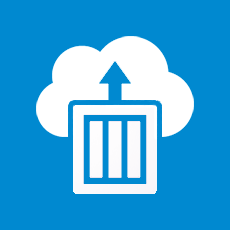 Azure Container Instance connector gets more useful
Azure Container Instance connector gets more usefulWe recently did an internal review of the Azure Container Instance connector and found it wasn’t very useful. Today, all of that changes. The following new actions bring exciting possibilities for managing your Azure containers.
- Create or Update a container group – We love the “Create or update” style of connector because you no longer have to worry about the creation state of the object. Use this in your Flow to update attributes of a container group without worrying about duplication. (How it matches an existing container group sadly is not documented.)
- Get Cached Images – Use this list to specify a valid container image you want to use when updating or creating a new container. Useful to ensure you always have a valid value for image.
- Get Capabilities – This will give you a list of CPU/Memory/GPU capabilities in a region. Also useful for constructing a valid container.
- Get current usage – Finally! Now you can get details about your subscription usage in a flow. With this you can automate some cost control measures and connect it to resource usage outside of Azure. This may be today’s most important update.
- Start/Stop containers in a container group – Starting or stopping the containers will impact compute resource usage which ties directly into cost control. We like the possibilities granted with this and the potential to save resource spend.
- Update a container group location or tags – This provides some functionality that was somehow missing before. Yay. Now you can update tags and location.
? What can you do with the new actions?
Call us geeks, but we love the business capabilities exposed here. While you already have some built-in cost control measures in Azure, today’s update expands this to Power Automate which means you can start to tie your cost control work to resources outside of the Azure ecosystem.
Here are a few ideas of how you can utilize the exciting features above in Power Automate or Power Apps:
- Stop container usage when an external event happens. Use any trigger as a basis for shutting down a set of containers. The potential here is frankly exciting.
- Conditionally build new containers based on current usage combined with external information. Make your external data (for example, the number of orders placed required upcoming fulfillment) help you scale out additional resources ahead of time but only if current usage is below some pre-set limit.
While much more nuanced than the container above, if you have a large spend with Azure, this one has the potential to be far more exciting. Power Automate is a great place for this to live because by its very nature it allows a wider set of staff to manage which can be important when it comes to cost control measures.
Are you as excited about today’s updates as we are?We are falling more in love with the Power Platform and are happy to be the first to provide you with new and updated information on everything that’s changing.
Do you feel like you could make better use of the Power Platform? Want a hand, or just want to talk over some ideas about how to use the platform? Hit the button below to get in touch with me or another one of our friendly Power Platform specialists.
We know you can do even more when you use the tools available to their fullest possible potential.
-

New in Power Automate: Industrial App Store

This new connector provides prepackaged apps on top of your data Today, we have a single new Power Automate connector which brings the total to 344 Connectors. Today’s connector is Industrial App Store which offers an interesting approach to enhancing your data.
What is Industrial App Store?I reached out to Jason Cook, Business Development Manager of Intelligent Plant who helped me understand how this new connector works. Industrial App Store offers a collection of apps that enhance data stored in existing data silos.
To use it, you’ll install App Store Connect and setup you data stores from there. The App Store offers various industrial system apps, such as a Flow measurement app for pumps or other industrial controls. Once you have the App Store Connect installed, you’ll be able to purchase, setup and install various prepackaged apps available to you. These are not limited to apps by Intelligent Plant.
Think of the apps as small software components used by a variety industrial plants to measure and analyze data from various hardware systems. Instead of developing control systems, plant managers can use and choose from a variety of apps by other vendors through the app store while avoiding expensive custom software solutions.
The Power Automate connector then allows these systems to be read by processes triggered through some other way. This connector offers read-only access to the data from the Industrial App Store and has no triggers to kick off a Power Automate process.
Here’s an example of how to use this connector:
We recommend watching this at at least 1.5x speed Need Help?For all questions related to this new connector, we recommend you reach out to Intelligent Plant: info@intelligentplant.com.
For all your Power Automate questions, smack the button below and one of our Power Automate Specialists will be happy to give you a hand.
-

New in Power Automate: TRIGGERcmd, OpenText CS, and DocumentsCorePack
On Friday April 3, three new connectors were released to the Power Platform, bringing the total number of connectors to 343.
What is TRIGGERcmd?
TRIGGERcmd is a RPA connector TRIGGERcmd is a Robotic Process Automation (RPA) agent that allows you to run commands on computers remotely. It is very similar to the UI Flow feature offered by Microsoft, but comes at a cost of $15 per year (compared to Microsoft’s UI Flow pricing at $150 per month!)
TRIGGERcmd offers a free option that provides 1 action per minute on one computer. With a $15 per year subscription, this limit is lifted.
TRIGGERcmd goes beyond simple RPA and offers a paywall feature, which means you can tie payment to the actions, however we would recommend something like the Stripe connector instead so you can be more flexible.
We see this connector, in combination with other tools like AutoIt as a way to drastically decrease costs for RPA. You can realistically choose this instead of a UI Flow for your RPA projects. (Development will be initially more involved, but UI Flows are in preview anyway.)
What is OpenTextCS by OneFox?“… It’s time to start bringing order to the chaos.” OpenText CS by OneFox is a Power Platform connector that brings the services of OpenText. The highly informative video above will give you a crystal clear idea of what OpenText does and leave you without a single additional question of any type.
Use this connector to bring together Open Text Content server and Power Platform. The OpenText Content server acts as a file storage hub in combination with OpenText document and information services. This connector is a good way to expand upon an existing OpenText implementation.
Inside this connector, you’ll find actions that allow you to:
- Update file and folder data and metadata
- Search folders for content by type
- Retrieve file content or folder information
- Delete files and folders
- Create files and folders
We don’t know much about OpenText, but One Fox seems to have done a great job with this connector.
What is DocumentsCorePack?
Bringing the power of DocumentsCorePack to the Power Platform DocumentsCorePack is a connector by MSCRM-ADDONS.com that allows you to get templates and create, print, and store or email documents thru a flow. You can also link .PDFs files to .DOCX files. (Full disclosure: Reenhanced is a MSCRM-ADDONS.com partner.)
This connector, while it is available, is still in beta and isn’t quite ready for use. We’ve spoken to MSCRM-ADDONS.com and they’ve recommended you wait until their April release announcement before you start to use this connector.
But if you’re a bit of a rebel and like to explore new things there’s nothing stopping you from diving in right now. Here’s what the connector offers:
- Print files and documents (DCP printers must be setup separately)
- Create documents from a DCP template
- Concatenate files (even those of different types: .PDF and .DOCX)
- Queue a document creation job
- Retrieve results of queued document creation jobs
As a partner of MSCRM-ADDONS, we have reached out to get more information about this connector. We’ll be posting our interview in a follow-up blog post. Keep your eyes peeled!
What else is new in Power Platform?April 3rd was a big day for Power Platform bringing a range of changes in addition to the ones listed above. We’ve noticed the following updates:
- A new format for the documentation portal. You can now filter connectors by connector type: Standard, Premium, Preview, Production and by platform availability.
- Icon updates for various services
Are you building a service with these connectors?We would love to hear from you! We love learning about creative ways people have used the Power Platform and would be happy to share your experience here, especially if it’s using one of the new connectors available in Power Platform.
Alternatively, if you’d like a hand building a Power Automate flow, a Logic App, or a Power App using these or other connectors smack the button below and one of our friendly specialists will be happy to help.
-

New in Power Automate: Connect2All & Sendmode
Today two new connectors have been added to Power Automate. Connect2All and Sendmode both of which offer unique functionality to your Power Automate workflows and brings the total number of connectors to 340.
What is Connect2All?
Connect2All is a Business Central connector from GAC Business Solutions GAC Business Solutions is a Microsoft Partner in the Netherlands who works with Microsoft Dynamics 365 Business Central. As a part of their work, they’ve developed Connect2All, which is a connector available in Logic Apps, Power Automate and Power Apps.
We don’t know much about this connector or how useful it may be to you because it appears heavily reliant upon customizations written for GAC’s customers. (For example, you must specify
Tableas an integer instead of a string.) Unless you’re a GAC customer, you probably won’t be able to make much use of this connector in your Power Platform workflows.However if you’ve been looking for ways to interface with Business Central in new ways, this connector may just well be what you’ve been waiting for.
Here are just a few of the new actions available to you from Business Central when using this connector:
Delete Media – A way to remove data from a specific field in a tableGet CSV / XML – A collection of actions to get CSV or XML data from Business Central (optionally with headers or metadata)Get Record – This is also available in the official Business Central connector, but the Connect2All version allows you to filter data (perhaps this uses ODATA?) and other options to refine what you receive.Get Report – You’ll need to guess at the parameters for this format, but this action looks to allow you to get Business Central reporting in your Power Platform apps.Perform an Action – Use this action to execute the specifiedcodeunitin Business CentralProcess CSV/XML – These connectors allow you to bring XML or CSV data into Business Central, but you’ll have to figure out how to provide the correctConfigurationstring.What is Sendmode?
Sendmode is a Bulk Text Messaging system Sendmode is a 100% Irish owned company that provides bulk text messaging services. This new connector adds to the list of connectors that provide text messaging services from within Power Automate.
We found this connector to have a slightly strange implementation in that you need to provide a
Header Content Typefor each of the actions. (Hint: You want to use the valueapplication/jsonin every action you use.)You probably won’t want to use this connector unless you already have a Sendmode account because unlike other connectors, this one requires a
customeridfor each text message you send, which means you’ll have to manage the customer list inside of Sendmode.What else is changing in Power Automate?It appears that Microsoft has been quiet on the Power Automate front for the last week. Aside from a number of updates on Friday, we’re seeing only small changes. They’re continuing to change references to Power Platform services to contain spaces (So PowerApps became Power Apps for example. It appears the spaced version is now the official version.) Additionally, we’ve noticed a few small changes to a few service logos.
We will continue to keep you up-to-date on the latest changes inside the Power Platform, so keep your eyes on our blog for updates. We are working hard to stay on top of the entire Power Platform ecosystem.
Need Help?Do you need help implementing a Logic App, Power Automate, or Power App using Connect2All or Sendmode? We are the most up-to-date partner in the Power Platform community and can help you with your implementation. Click the button below to contact one of our friendly automation specialists.
-

New in Power Automate: Traction Guest & SOLYP
Two new connectors were added today, bringing the total number of Power Automate connectors to 338! Let’s take a look at today’s new connectors: Traction Guest and SOLYP.
What is Traction Guest?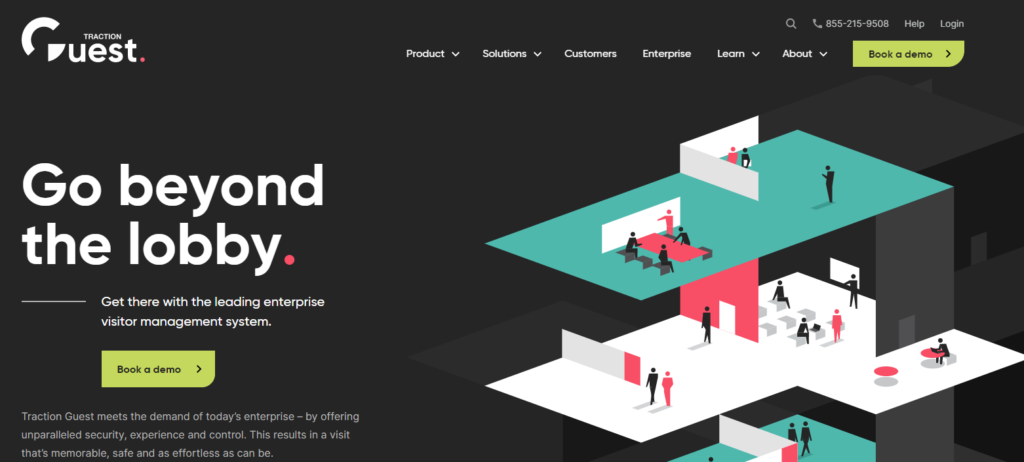
Traction Guest adds a new Power Automate connector! Traction Guest offers an end-to-end visitor management system (for physical site visits, not web traffic!), with unique solutions in the following industries: technology, manufacturing, utilities and health care. Their websites lists a few notable customers, including UPS, ThermoFisher Scientific and Unilever. Their solution features workflows, permissions, trigger actions and alerts in a drag-and-drop environment that likely feels familiar with those using the Microsoft platform.
Let’s dive more deeply into their Power Automate connector. The Traction Guest connector contains one action and four triggers:
- Action: Delete a webhook
- Trigger: When a guest is invited
- Trigger: When a guest signs in
- Trigger: When a guest signs out
- Trigger: When a guest triggers a watchlist
The business use cases here are very interesting. If your organization already leverages the Traction Guest technology platform, you can extend the benefits in a number of ways. Here are a few we have thought about using:
- Automatically alert a user group when a visitor signs in our out via Microsoft Teams
- If a guest triggers a watchlist, automate a number of actions
- When a guest is invited, automatically add a Google or Office Calendar entry
This is an interesting connector that expands the breadth of Power Automate into the visitor management technology platform. We are excited to see what we can do with it!
What is SOLYP?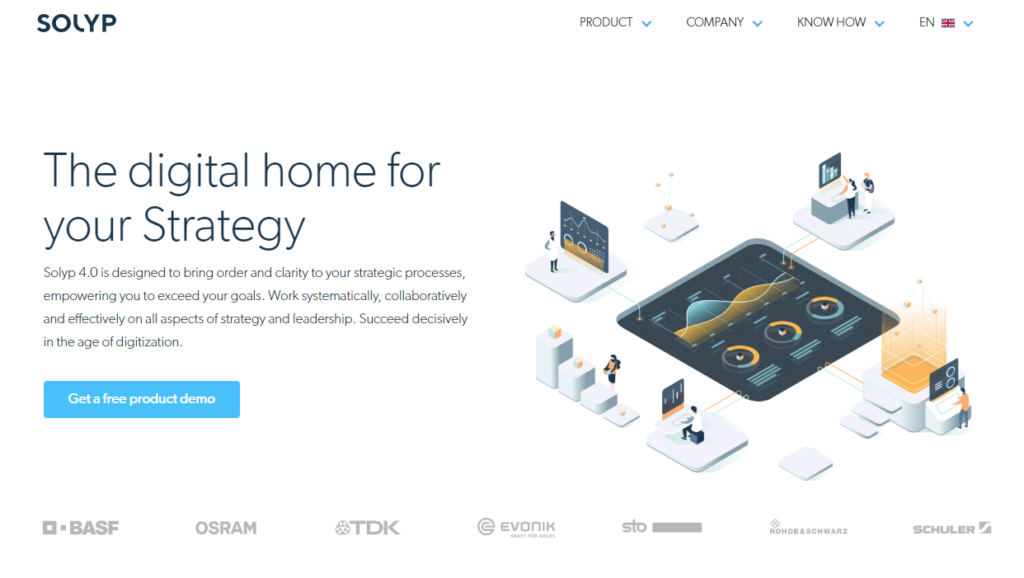
SOLYP is one of the newest connectors to be added to Power Automate. SOLPY, a German company, is a part of Evolutionizer. According to their website, their platform is hosted on Microsoft Azure and provides four offerings: strategy development, strategy implementation, strategy adaptation and the Solyp 4.0 crisis strategy.
Their Power Automate connector has 13 actions:
- Create a new item
- Find items by integration system
- Get a roadmap
- Get a user
- Get all item impacts
- Get all item types
- Get all items
- Get all roadmap impacts
- Get all roadmaps
- Get an item
- Map a value
- Set an impact value
- Update an item
Their website lacks documentation about their new connector, so it’s difficult to find what they can offer in Power Automate. In fact, at Reenhanced, we were unable to discover any useful information. At this point, it seems to be useful only if you’ve already hired Solyp to provide consulting services and business strategy for your business. Perhaps they will add it in the future? For now, the ability to understand the unique offerings with this connector remain a mystery.
Need Help?Do you need help implementing an integration with Traction Guest or SOLYP and Power Automate? We can help. Click the button below to contact one of our friendly automation specialists.
Contact a Power Automate specialist for help! -

New in Power Automate: WorkPoint, OptiAPI & JotForm Entrprise
Three new Power Automate connectors were added today, bringing the grand total to 336 Power Automate connectors! We have seen quite a few new connectors being added in the PDF space (like last week’s Cloudmersive PDF connector).
There seems to be a great need for working with PDF files in Power Automate, and there’s a free solution in one of today’s new connectors (though it is a premium connector). Two out of three of today’s new connectors have some sort of PDF conversation action. It’s clearly a trend growing in Power Automate connectors! Let’s take a look at what you can do with these three new connectors.
WorkPoint extends SharePoint and Office 365 features.OptiAPI is a free connector providing PDF & text manipulation.JotForm Enterprise creates forms and surveys and embeds a web form that can kick off a Power Automate task on submission.What is WorkPoint?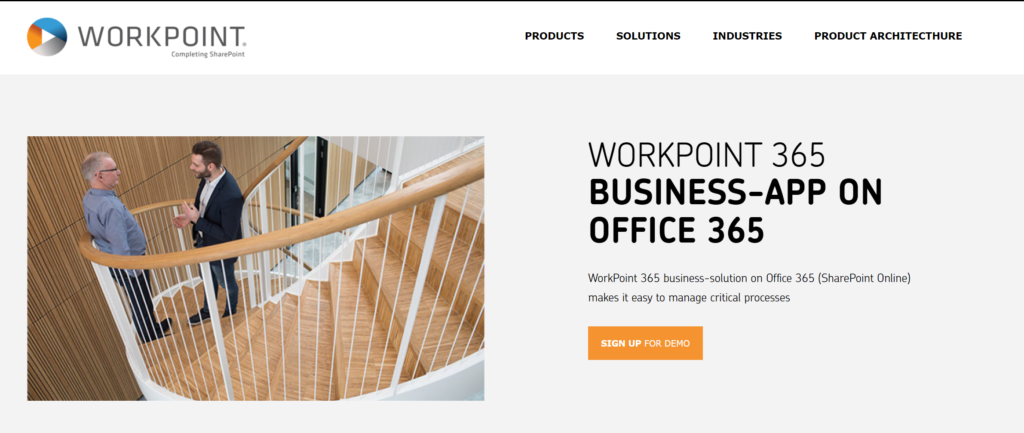
Workpoint offers a new Power Automate Connector, available today! Workpoint is a buzzword heavy product that provides some of the features from Dynamics 365 directly into Sharepoint. It’s useful for companies who aren’t ready or aren’t able to make the leap from Sharepoint to Dynamics. In Power Automate, there is one trigger and 17 actions.
A full list of these actions can be found here. Some interesting actions we liked were:
- Adds a document to a digital signature transaction
- Converts a document to PDF and saves it to a list (the PDF connector function continues to grow!)
What is OptiAPI?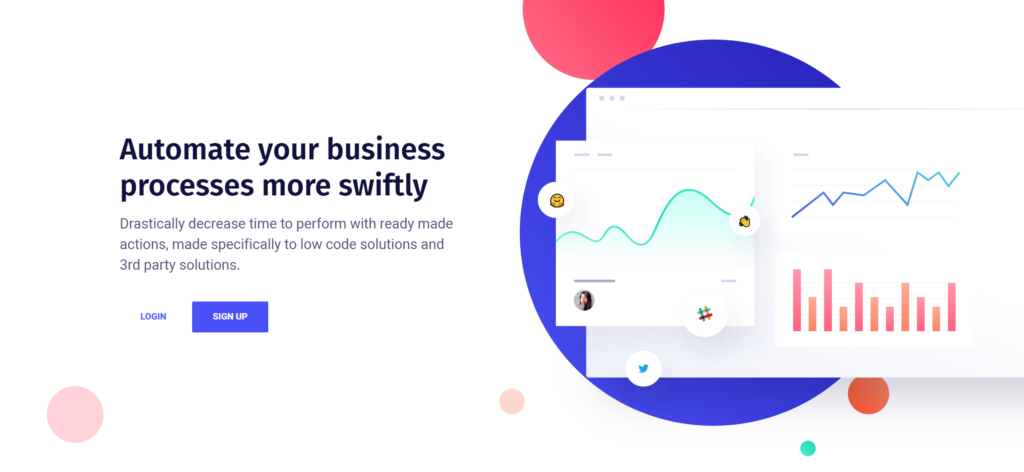
OptiAPI offers a new Power Automate Connector, available today! OptiAPI is an early-stage API that provides PDF and text manipulation at this time. It’s not terribly useful yet, but is completely free (though it is a premium connector on Power Automate). OptiAPI has 6 actions in Power Automate:
- PDF – Combine PDF files: Combines multiple PDF files
- PDF – Set a Password: Password protects a PDF file
- Text – Find References Using Regular Expression
- Text – Regular Expression Replace: Regex replace
- Text – Remove Duplicate Values: removes duplicate values for one or more arrays
- Text – Text Replace
What is JotForm Enterprise?
JotForm Enterprise offers a new Power Automate Connector, available today! JotForm Enterprise has one trigger in Power Automate: when a response is submitted. Each time your form gets a new submissions, this operation will trigger a flow. To create your connection, you will need your JotForm API key and the JotForm enterprise domain.
The standard JotForm connector is already available on Power Automate. Now, JotForm Enterprise customers can use Power Automate.
Need Help?Do you need help implementing an integration with WorkPoint, OptiAPI or JotForm Enterprise and Power Automate? We can help. Click the button below to contact one of our friendly automation specialists.
Contact a Power Automate Specialist for help!


